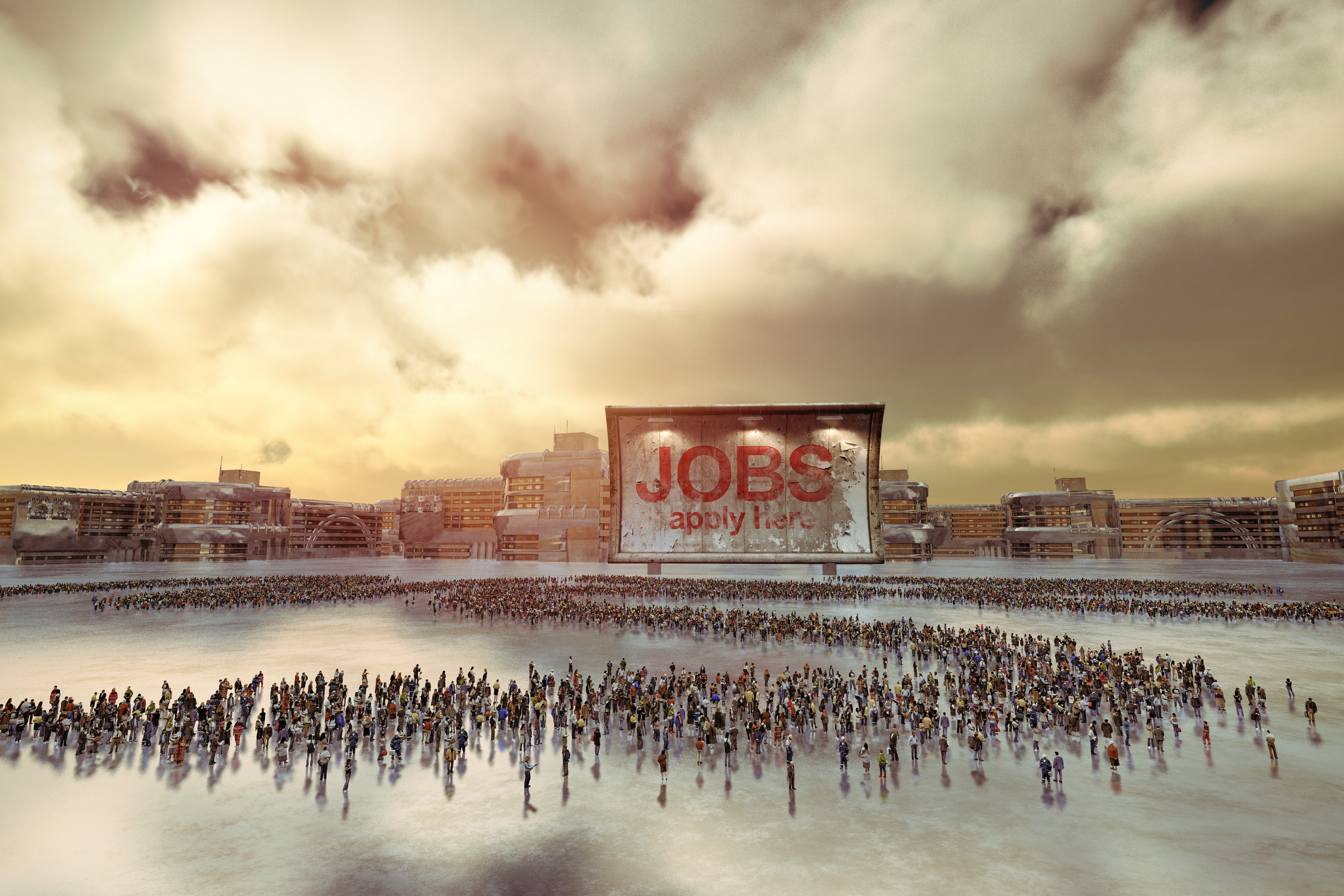After the great financial and economic crisis of 2008–09, persistently higher levels of unemployment have been experienced in mature capitalist economies, particularly in Europe. Output, too, exhibits a lower growth rate and an estimated potential path far below its pre-crisis trend. But contrary to what postulated by standard textbook macroeconomic models, the slowdown has not set in motion a continuous process of decelerating inflation or increasing deflation.
Evidence on the persisting effects on output and employment casts severe doubts on the legitimacy of New Consensus macroeconomics, whose main feature is the confidence in monetary policy’s ability to reduce output volatility and ensure stable and lasting growth in capitalist economies.
Interestingly, the apparently never-ending post-crisis stagnation favored the revival of the theme of hysteresis (Blanchard and Summers, 1986; Ball, 2014; Blanchard et al., 2015; Blanchard, 2018; Girardi et al., 2020).[1] With the possibility of hysteresis, mainstream macroeconomists admit the possibility that a fall in economic activity may have persistent effects on macroeconomic outcomes. In fact, the term is currently used with respect to both the unemployment rate and output level. In particular, hysteresis implies that, due to a deep recession, a sharp increase in the actual unemployment rate may also cause a change in the same direction of the equilibrium unemployment rate or NAIRU (Non-Accelerating Inflation Rate of Unemployment) and, consequently, in potential output.[2] Putting it differently, a certain degree of path dependence is currently acknowledged for both output and unemployment also within the prevailing mainstream approaches to macroeconomics (Blanchard, 2017). According to these models of hysteresis, a crucial feature of higher unemployment rates are not accompanied by the deflationary pressure predicted by more traditional macroeconomic models. This circumstance has been identified as missing deflation, and it further testifies to a puzzle concerning the unemployment-inflation link (Yellen, 2014).
Three main explanations for hysteresis have been provided so far.[3] The first one refers to insider/outsider models and to the role of labor market institutions (Blanchard and Summers 1986; Lindbek and Snower 1985). The second one looks at the effects of aggregate demand on capital formation (Rowthorn, 1995), and has been recently discussed by several scholars (Haltmaier, 2012; Ball, 2014; Fatàs and Summers, 2016; Martin et al., 2015). The third investigates the role of long-term unemployed: due to various factors, individuals who are unemployed for a sufficiently long period (generally, more than 6 months) become detached from the labor market or lose skills and employability and hence do not exert competitive pressure on wages (Blanchard and Diamond, 1994; Ball et al., 1999; Ball, 2009).
In our new INET Working Paper, we focus on the latter explanation of hysteresis, which is very widespread in the New Keynesian literature. According to this interpretation, an increase in long-term unemployment would cause an increase in the NAIRU since allegedly long-term unemployed individuals are bad inflation fighters (Rusticelli, 2015). These people would indeed suffer from skill deterioration and detachment from the labor market[4], two conditions that would make them irrelevant for wage negotiations and non-competitive with regard to the other workers. According to the existing literature, the long-term unemployed would have fewer chances of being reemployed than the short-term unemployed – and hence would not contribute to pushing down inflation – for reasons that involve both labor demand (unemployment duration would have a ‘stigma’ effect, i.e. would be regarded by employers as a signal of undesirable characteristics) and labor supply (discouragement in job searching and human capital decay). Usually, the socio-economic literature identifies this phenomenon with the term duration (or state) dependence. The intuition behind this is rather simple: according to this approach, the longer the duration of unemployment, the lower the probability of being rehired (Layard et al., 1991; Bean, 1994; Blanchard and Diamond, 1994; Dosi et al., 2016). Although currently subject to debate and not wholly supported by evidence[5], this explanation of hysteresis relies on the assumption that long-term unemployed people are on the margins of the labor force, and therefore they are considered as exerting feeble (downward) pressure on wage dynamics (Ball, 1999; Krueger et al., 2014).
Within this class of models, a higher pool of long-term unemployed has relevant implications for macroeconomic outcomes (and therefore for policy-making), as a higher unemployment rate would be needed to achieve stable inflation: in other words, higher long-term unemployment would be associated with an increase in the NAIRU [6]. Accordingly, the inflationary risk of expansionary policies become higher than “in normal times.” Such a higher risk would depend on the fact that for the same unemployment rate, a lower unemployment gap (namely, the difference between actual and equilibrium unemployment rate) would occur, owing to the increase in the NAIRU. Moreover, in the case of expansionary policies labor demand would primarily involve short-term unemployed individuals, and these would be able to bargain for substantial wage increases, owing to the inability of the long-term unemployed to actually compete for the jobs. Summing up, two implications for an expansionary demand-side policy can be drawn: on the one side, policies aimed at reabsorbing unemployment would hardly be effective in reducing its long-term component; on the other side, such measures would be associated with a persistent effect on price inflation.
Crucial in this line of argument is the assumption of a certain degree of asymmetry between total and long-term unemployment. In fact, this interpretation of hysteresis would predict that when total unemployment falls (i.e., during phases of economic recovery), its long-term component would not fall in the same proportion. Moreover, if expansionary policies aimed at reducing long-term unemployment occur, these would most likely cause a permanent or accelerating increase in the inflation rate. In our research, we submit these two hypotheses to empirical scrutiny: first, we verify if the alleged problem of irreversibility in long-term unemployment actually exists; second, we test the emergence of significantly higher inflation during and after episodes of a sharp reduction in long-term unemployment.
Concerning the first research question, we analyze the dynamic trends of the unemployment rate and the long-term unemployment rate in 25 OECD countries from 1983 to 2016. Contrary to what postulated by the New Keynesian approach, we observe a direct relationship: during phases of unemployment reduction, the long term-unemployment rate decreases too; similarly, when the former increases, the latter increases as well (as in Webster, 2005). Indeed, we observe a very high correlation between the two variables (in both levels and first differences). Interestingly, the long-term unemployment rate, both in the average value among OECD countries and in most individual countries, tracks the dynamics of the overall unemployment rate in the same way whether the latter increases or decreases. In conclusion, we provide evidence against the non-reversibility of long-term unemployment. Quite on the contrary, data suggest the existence of symmetry in the dynamics of the unemployment rate and its long-term component during phases of recession and recovery.
While all these elements suggest that long-term unemployment should be considered a reversible phenomenon, we cannot yet assert that its declines would not generate accelerating inflation, as the New Keynesian approach suggests. This is the second research question which our work tries to answer. To do that, we focus on specific cases of long-term unemployment reductions and we assess the behavior of Consumer Price Inflation (CPI) in the subsequent 5-years window. Empirically, in our panel, we identify 78 episodes of sharp reductions in long-term unemployment. We do so by defining sharp reduction as a yearly percentage decrease in the long-term unemployment rate, higher than the country mean by more than a standard deviation. Then, we employ local projections (Jordà, 2005) to investigate the impact of these reductions on the inflation rate. This approach allows us to identify the dynamic behavior of inflation in our ‘treated group’ (country-years with a shock, that is a strong reduction in long-term unemployment) with respect to the ‘control group’ (that is, non-episode observations). Moreover, we deal with the existence of endogeneity by looking for significant differences between control and treated group in some macroeconomic variables in the year before the shock (cf. Girardi et al., 2020).
Our findings indicate that after episodes of long-term unemployment reduction, inflation in treated units is in line with the control group. On average across model specifications, we find that two years after the shock, treated units present an inflation rate that is 0.5 percentage point above the control group, but this difference is never statistically significant. At the end of the 5-year window, the discrepancy is null. In other words, we find no trace of persistently higher inflation after episodes of a strong reduction in the long-term unemployment rate.
Remarkably, we replicate our exploration in a subset of observations identifying strong reductions of the long-term unemployment rate that occurred in country-years featuring, according to OECD estimates, a negative unemployment gap. According to New Keynesian models, when the unemployment rate is below the NAIRU barrier, inflationary pressures would take place. Nevertheless, our findings confirm that no signs of persistent effects on the inflation rate after the shock occurs even when the economy is already operating ‘above its potential,’ as defined by the standard approach to macroeconomics and measured by international institutions. Evidence on the non-inflationary effects of a sustained reduction in long-term unemployment are confirmed by a number of robustness tests, which include: i) the inclusion of several control variables in our baseline specification, such as the pre-existing trend in GDP; ii) the use of alternative measures of price inflation, namely GDP deflator and export prices; and iii) the use of an alternative definition of the long-term unemployment rate, consisting in the ratio of long-term unemployed to the working-age population instead of the active labor force.
All in all, our research provides empirical evidence questioning the implications of the explanation of hysteresis based on the role played by the long-term unemployed along two lines of inquiry. On the one hand, our evidence undermines the irreversibility of long-term unemployment. On the other hand, the evidence we provide is supportive of the negligible effects in terms of inflation associated with episodes of strong reductions in long-term unemployment. Our findings turn the spotlight on the policy implications of the hysteresis models under scrutiny, according to which the NAIRU should be reduced almost exclusively by means of structural reforms in the labor market, as so often has been advocated by international institutions. Indeed, by incorporating hysteresis, these models present two controversial implications, which our findings call into question: i) it is advocated that monetary tightening or a recession may increase the NAIRU; and ii) once the NAIRU has increased, expansionary policies aimed at restoring the previous lower levels of unemployment would turn out to be inflationary.
On the contrary, according to our exploration, demand-side expansionary policies would be able to decrease both total and long-term unemployment, without generating persistent acceleration in inflation. This policy implication is at variance with the conventional wisdom that aggregate demand only matters in the short run, as well as with the role of the NAIRU as an inflationary barrier, which is ultimately determined by supply-side factors. Once we admit the possibility of extending the role of demand in determining persistent changes in output and employment, the path-dependence of potential output becomes quite a natural consequence.[7] From our perspective, the most persuading explanation of such path dependence can be found in the role of aggregate demand in affecting capital formation and productivity (see Girardi et al., 2020).
Notes
[1] The New Consensus developed during the so-called period of Great Moderation, that is, between 1985 and the Great Recession. In that context, the concept of hysteresis was almost totally neglected by academic research. As Blanchard (2018) has pointed out, over time, as the so-called Great Moderation took place from the mid-1980s up to about 2007, research on hysteresis largely disappeared (p. 98).
[2] The concept of NAIRU has been criticized along different lines by a variety of works (among others, Arestis and Sawyer, 2005; Storm and Naastepad, 2007; Lang and Setterfield, 2020). Stockhammer (2008) traces a series of specific characteristics of the NAIRU and analyzes them in alternative theoretical frameworks. Moreover, a recent policy brief by Blanchard (2016), based on an earlier paper (Blanchard et al., 2015), raised a number of interesting points concerning the NAIRU and the Phillips Curve. In this regard, a partial reconsideration of the ‘natural rate’ of unemployment also emerges in Blanchard (2018).
[3] For a more detailed review, the interested reader may refer to Girardi et al. (2020).
[4] In order to increase the NAIRU, such detachment, however, must be only partial: long-term unemployed are supposed to be less effective in searching for a job, but still do so – otherwise, their detachment would involve simply a decline in the labor force, with no increase in measured unemployment.
[5] Some criticisms have been advanced on different grounds, to the point that some very influential scholars have partially revised their perception of the role of long-term unemployment (Blanchard, 2006; Blanchard and Katz, 1997). For instance, even supporting the notion that time out of work leads to skill decay, Edin and Gustavsson (2008) do not disregard the possibility of reverse causation (that is, skill obsolescence leads to unemployment). Moreover, a variety of works have criticized the role of unemployment benefits, which are supposed to increase the length of unemployment spells, in affecting labor market outcomes (among others, Armingeon and Baccaro, 2012; Stockhammer and Sturn, 2012; Boone et al., 2016).
[6] To understand how the New Keynesian approach formally incorporates the possibility of hysteresis in the labor market, the reader may refer to a standard macroeconomic textbook’s presentation (cf. Carlin and Soskice, 2014). With a certain degree of generality, an increase in long-term unemployment is likely to have an effect comparable with an increase in labor market institutions operating in favor of workers.
[7] The concept of potential output in a different framework is not immediately intelligible. According to Serrano (2019), potential output can be viewed as ‘determined by size and efficiency of the existing stock of capital equipment’ (p. 13) at some point in time. But such stock can be increased by additional investment stimulated by aggregate demand (Fontanari et al., 2020; Girardi et al., 2020).







